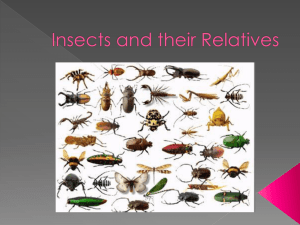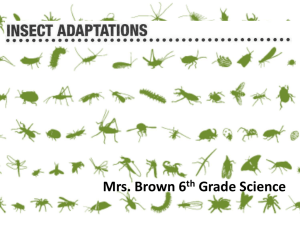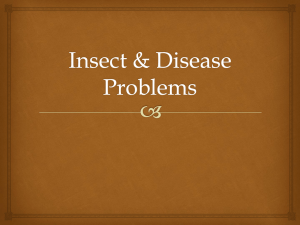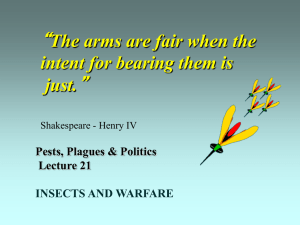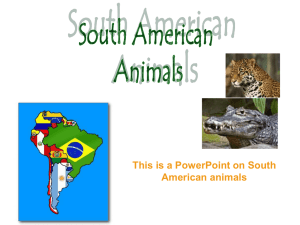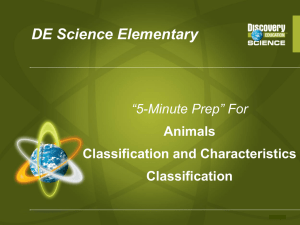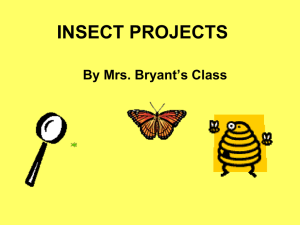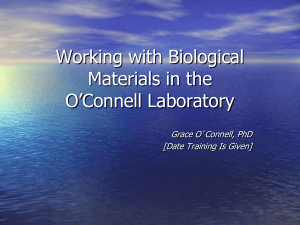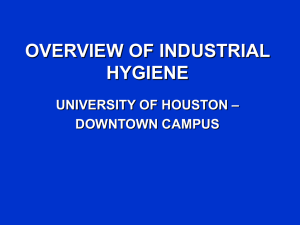Regulatory Initiatives on GM Insects
advertisement
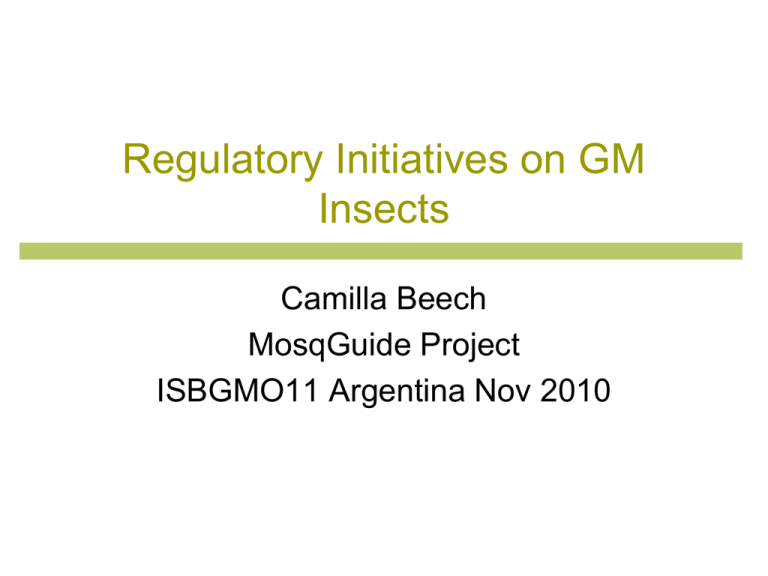
Regulatory Initiatives on GM Insects Camilla Beech MosqGuide Project ISBGMO11 Argentina Nov 2010 Worldwide Guidance and Training – GM insects WHO Epidemic and Pandemic Alert and Response (EPR) Biosafety Unit – Laboratory Biosafety Training GM Vectors. WHO/TDR BL5 Biosafety Training Centre (Africa, Latin America, Asia) WHO/TDR BL5 Genetically Modified Vectors Projects Coordination Committee WHO/TDR BL5 Project on Best-Practice Guidance for Deployment of Genetic Control Methods Against Mosquito Vectors in Disease Endemic Countries (MosqGuide) UNDP-Sponsored Risk Assessment Workshop Series on Transgenic Insects, Malaysia Ethical, Social and Cultural Program for the Grand Challenges in Global Health (GCGH) Initiative – MRC Centre, University of Toronto, Canada Regional Standards for Phytosanitary Measures (RSPM) 27 published by the North American Plant Protection Organisation (NAPPO) Environmental Impact Statement (EIS) prepared and published by the United States Department of Agriculture Animal and Plant Health Inspection Service (USDA/APHIS) FNIH/WHO Technical Meeting on GM Vector Control. Cartagena Biosafety Protocol – Ad Hoc Technical Group on Risk Assessment – guidance for LM mosquitoes EFSA – Environmental Risk Assessment Criteria for GM Insects Regulatory Initiatives Key feature of all the initiatives is a desire to maintain a transparency, openness and inclusiveness of stakeholders Regulation is desirable. Regulation must be proportionate with a potential risk /benefit scenario as for other public health interventions. Mosquito releases need to include: Scientific considerations Social and ethical considerations Regulatory considerations Regulatory Progress: Initiatives WHO has set up 6 initiatives, mainly through TDR MosqGuide’ best practice guidance for use of GM mosquitoes for disease control (www.mosqguide.org.uk) African, Asian and Latin American Regional Biosafety Training Centres set up by WHO/TDR Coordinating Committee Laboratory Biosafety and Biosecurity of Modified Vectors “ Train the Trainers” WHO/FNIH Technical Consultation on GM Mosquitoes Gates Foundation Grand Challenges in Global Health MRC Centre (Toronto) is looking at Ethical-Social-Cultural (ESC) aspects prior to and during deployment funded by the Gates Foundation GCGH initiative. Large scale cage trials underway in Mexico Malaysian Progress UNDP sponsored Workshop on Risk assessment of transgenic insects – Kuala Lumpur Nov 2008 >70 scientists and decision makers Discussion and workshop on risk assessment techniques and application of risk assessment to transgenic insects for open release. Proceedings published in Asia Pacific Journal of Molecular Biology and Biochemistry Risk communication workshop – Mar 2010 Cartagena Biosafety Protocol Cartagena Protocol on Biosafety -Ad Hoc Technical Expert Group on Risk Assessment preparing Guidance document on Living Modified Mosquitoes (April 2009) Science based, transparent risk assessment Case by Case approach Points to consider and their rationale, supporting bibliography Online forum and online conferences (Feb 2010) Reported April 2010 Review Japan Oct 2010 Most countries will regulate GM mosquitoes under national implementation of Cartagena Protocol Is this the right approach? (Marshall – Nature Biotechnology 2010) USA The USDA has published an Environmental Impact Statement (EIS) on the use of autocidal technology (RIDL) for GM fruit flies and PBW and Record of Decision (ROD) – 2009 “The environmentally preferable alternative for the use of sterile insect technique in plant pest control programs is the alternative that minimizes potential impacts to human health, non-target species, and environmental quality.” This considered COMPARATIVE RISK. FIRST EIS Completed on any GMO !! 4 years of open field release of genetically modified pink bollworm in USA (2006-2009) Insects modified for plant pest control programs fit within US regulations (Plant Protection Act) administered by Biotechnology Regulatory Services (BRS) Mosquitoes don’t fit here. USA Mosquitoes for public health applications – a regulatory challenge ! FDA regulates GM animals – but not insects EPA regulates “biopesticides” – but not insects USDA-APHIS BRS/PPQ regulates plant pests – but not mosquitoes Solution: USDA-APHIS Veterinary Services – Animal Health Protection Act Co-ordinating agency with EPA, Centers for Disease Control, USDA-APHIS BRS Oxitec Ltd USA North American Plant Protection Organization (NAPPO) standard RSPM 27 Signed late 2007 Mexico, USA and Canada agreement for import, transport and confined field release of GM insects in plant pest control. Oxitec Ltd Europe European Food Safety Authority (EFSA) Considering criteria for Environmental Risk Assessment of GM Insects for commercial use (Oct 2009). Report published by external consortium (Environment Agency Austria) published Sept 2010 CT/EFSA/GMO/2009/03 Next steps: Working group for further refinement, then public consultation Summary International and national guidance available for GM insects Some countries are testing GM insects beyond the laboratory already USA (Agriculture) Mexico (Environment/CIBIOGEM) Malaysia (Environment/GMAC) Brazil (Health/CTNBio) Cayman Islands (Agriculture, Mosquito Law) Oxitec Ltd
